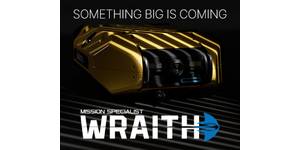Marine Technology Reporter Blogs - seabed
Potential Environmental Consequences of Deep Sea Mining

In order for deep sea mining to be safely implemented, it is necessary to ensure the protection of sensitive ecosystems and minimize the potential environmental impact of the mining operations. Hydrothermal vents are the primary source for deep sea minerals. The magma below these vents heats the surrounding seawater, which causes metals within the sediment to leach into the water. The subsequent shock of the cold water causes the metals to precipitate and form as solids in the sediment surrounding the vents. Because of these high concentrations, most deep sea mining would occur in the chimneys above the vents. The vents themselves would be preserved undamaged, but the chimneys would be destroyed in order to mine the metals encrusted on them.
Deepwater Technology for Deep Sea Mining

The recent agreement reached on deep sea mining by the Canadian mining company Nautilus Minerals and the government of with Papua New Guinea highlights the importance of deepwater technology developed for the O&G industry. The project will extract ores of copper, gold and other valuable metals from a depth of 1,500m. Nautilus Minerals, has been interested in mining the seabed minerals off Papua New Guinea (PNG) since the 1990s but was locked in a lengthy dispute with the PNG government over the terms of the operation. Under the agreement just reached, PNG will take a 15% stake in the mine by contributing $120m towards the costs of the operation.
Autosub6000 – UK’s Deepwater AUV

With a range up to 1000 km, a maximum operating depth of 6000 m, and a payload capacity of 0.5 m3, Autosub6000 is one of the world’s most capable ultra-deep water AUVs. The Autosub6000 was developed by the Underwater Systems Laboratory at the National Oceanography Center in Southampton, with funding from the UK Natural Environment Research Council. Autosub6000 is the latest 6000 m rated version of the Autosub AUV series, which has been used extensively for ocean science during the last 10 years, including work under ice operations in the Arctic and Antarctic. The design of the nose and tail sections, including the navigation and control systems, are substantially inherited from the tried and tested Autosub3.
MMT Upgrades ROTVs for Offshore Surveys

MMT is a Swedish marine survey company offering turnkey services, including two remotely operated towed vehicles (ROTV) equipped with various survey equipment for complete geophysical surveys. MMT has now upgraded the systems to be fully equipped with side scan sonars and sub bottom profilers, in addition to multi-beam echo sounders, inertial navigation system and doppler velocity log. This means a complete geophysical survey can be done from this platform in a speed of 6 knots and down to a water depth of 400 meters. The advantage of the ROTV is that it is a powerful tool for accurate line keeping during a survey. The upgrades system enhances the control of the tow-fish and allows both a constant altitude above the seafloor as well as maintaining the planned survey lines.
SeaBED-class AUVs – The Deepwater Imager

The SeaBED AUV, developed by WHOI scientist Hanumant Singh and colleagues, is an AUV that can fly slowly or hover over the seafloor to depths of 6,000 feet (2,000 meters), making it particularly suited to collect highly detailed sonar and optical images of the seafloor. SeaBED flies about 8 feet (2.5 meters) above the seafloor, flashing its strobe light and snapping a photo every three seconds. It maintains a constant altitude and speed of a ½ knot. Over the last seven years SeaBED-class AUVs have shown their versatility on missions ranging from shallow coral reef surveys to searches for deep-sea hydrothermal vents, in environments ranging from the open ocean to the dense ice cover of the Arctic.
AUV-towed Magnetometer Shows Potential in Seabed Survey

Marine Magnetics Corp from Markham, Ontario has successfully tested an AUV-towed Magnetometer. According to Doug Hrvoic president and owner of Marine Magnetics Corp, a company specialized in researching, developing and manufacturing marine magnetometers, OceanServer’s Iver2 AUV model was chosen for its design. “The Iver2 was designed to enable the integration of various sensors by a third party, and without direct involvement of the Iver developers,” says Bob Anderson, president of OceanServer Technology. “From a hardware standpoint, one approach has been to tow a sensor in the water column behind the AUV, and to connect a tow cable/electrical interface cable to a rugged…
Frade Spill a Wakeup Call for Deepwater O&G Exploration off Brazil

The seabed oil spill that is still ongoing next to the Frade oil field in the Campos Basin is again raising the local awareness to the inherent dangers associated with O&G exploration. As many politicians and environmentalists hit the panic button, this kind of spill is, if not expected, is a definite possibility. There is simply no failsafe way to drill for oil and when the actual drilling is done underwater the risks compounded and the time it takes to resolve the issue is also increased. As this particular spill is a deep water event 1,200 meters deep it may not be so easy to stop and Chevron, the well operator has already taken steps to shut down the well permanently, this may also point to a loss of well control and a possible blowout.

 August 2025
August 2025



